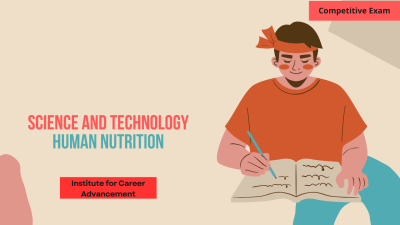Human Nutrition
Human Nutrition is the study of how food and nutrients affect the body and contribute to overall health and well-being. It focuses on the role of nutrients such as carbohydrates, proteins, fats, vitamins, minerals, and water in maintaining bodily functions, supporting growth, and preventing disease. Human nutrition examines how the body processes food, absorbs nutrients, and how dietary choices impact metabolism, energy levels, and chronic disease prevention. It is essential for understanding how to maintain a balanced and healthy diet to promote optimal physical and mental health. মানব পুষ্টি হল খাদ্য ও পুষ্টি কীভাবে শরীরকে প্রভাবিত করে এবং সামগ্রিক স্বাস্থ্য ও সুস্থতায় অবদান রাখে তার অধ্যয়ন। এটি শারীরিক ক্রিয়াকলাপ বজায় রাখতে, বৃদ্ধিকে সমর্থন করতে এবং রোগ প্রতিরোধে কার্বোহাইড্রেট, প্রোটিন, ফ্যাট, ভিটামিন, খনিজ এবং জলের মতো পুষ্টির ভূমিকার উপর দৃষ্টি নিবদ্ধ করে। মানব পুষ্টি পরীক্ষা করে যে শরীর কীভাবে খাদ্য প্রক্রিয়াকরণ করে, পুষ্টি শোষণ করে এবং কীভাবে খাদ্যতালিকাগত পছন্দগুলি বিপাক, শক্তির মাত্রা এবং দীর্ঘস্থায়ী রোগ প্রতিরোধকে প্রভাবিত করে। সর্বোত্তম শারীরিক ও মানসিক স্বাস্থ্যের প্রচারের জন্য কীভাবে ভারসাম্যপূর্ণ এবং স্বাস্থ্যকর ডায়েট বজায় রাখা যায় তা বোঝার জন্য এটি অপরিহার্য।
English
Last updated
Thu, 13-Feb-2025



















